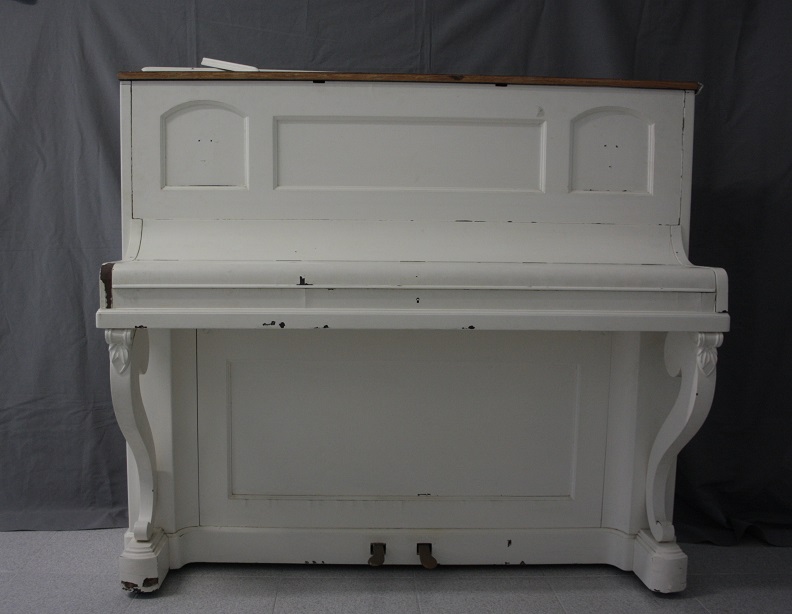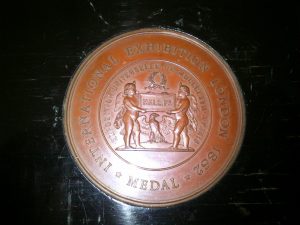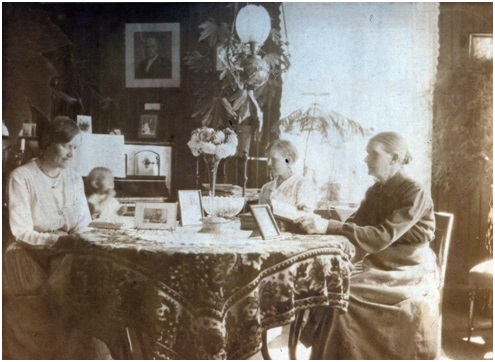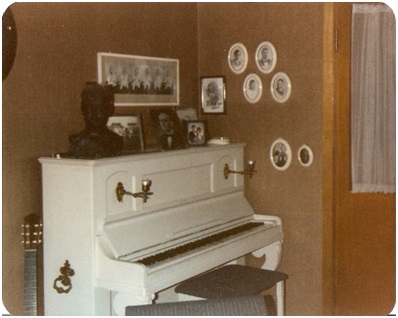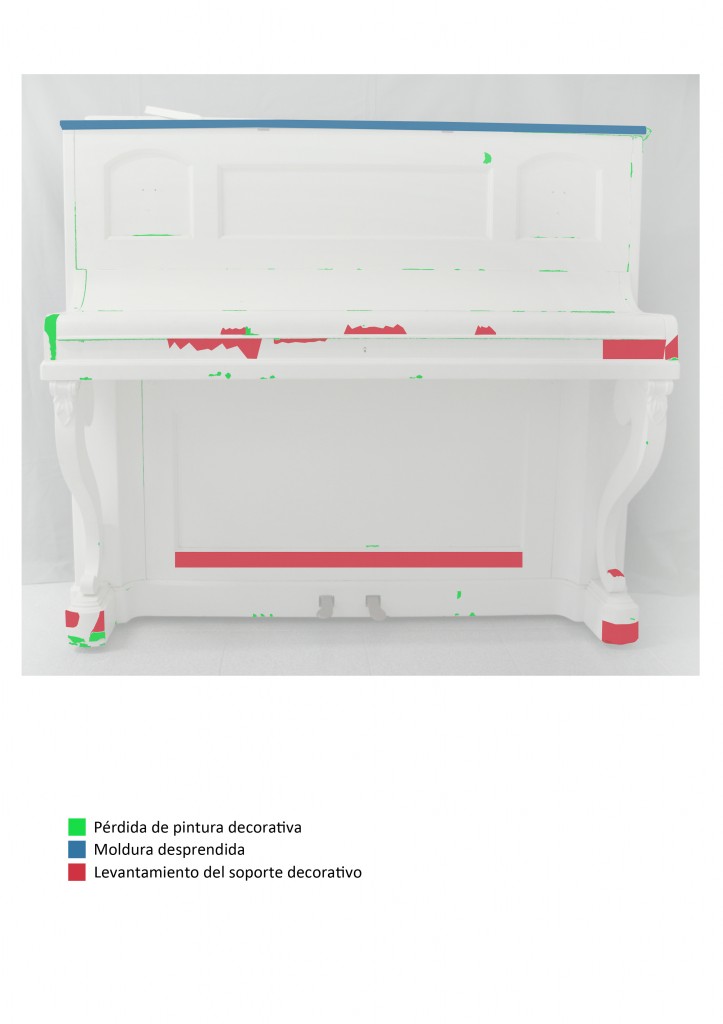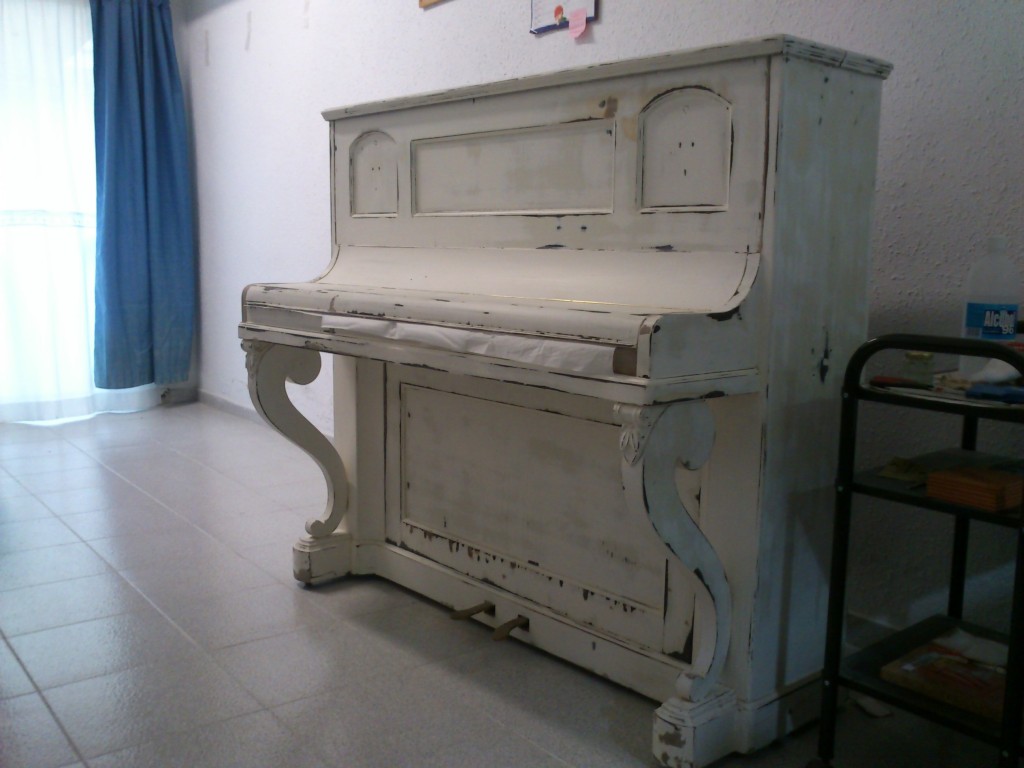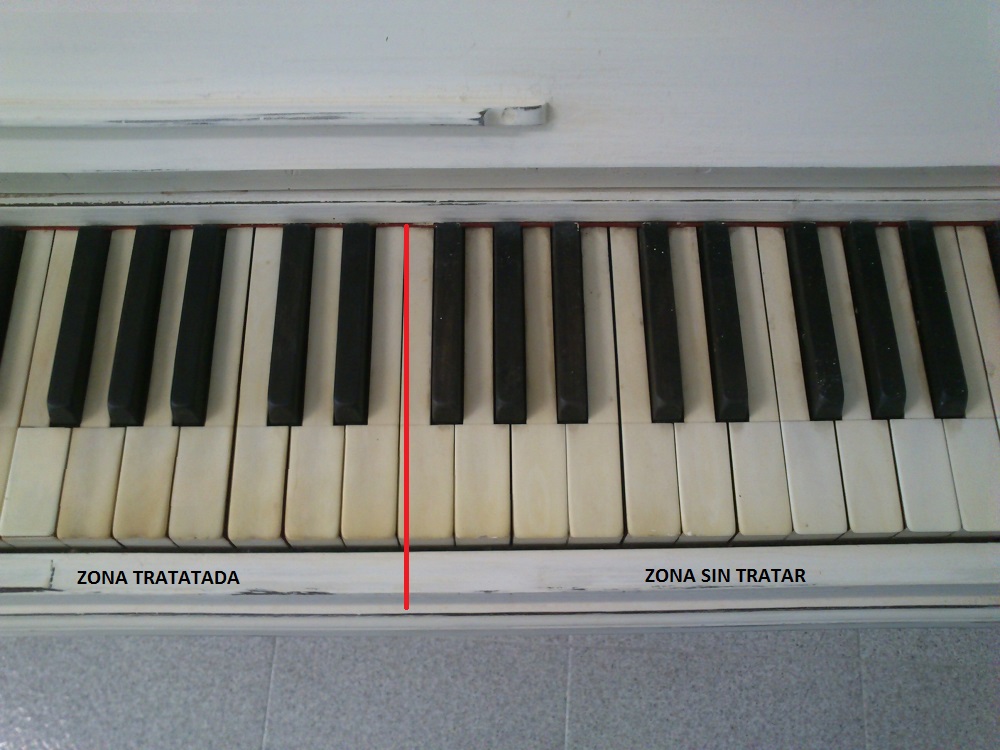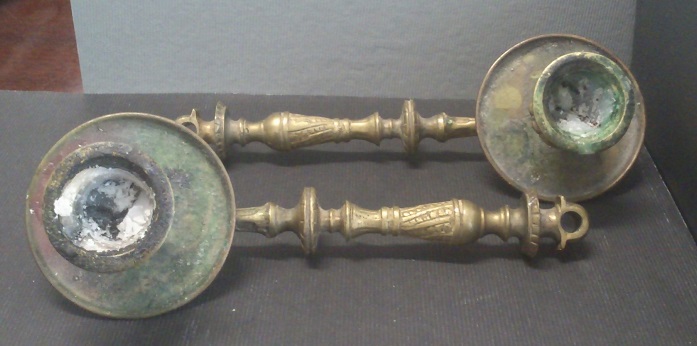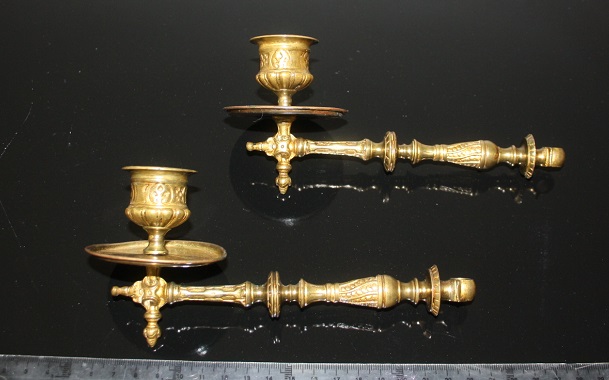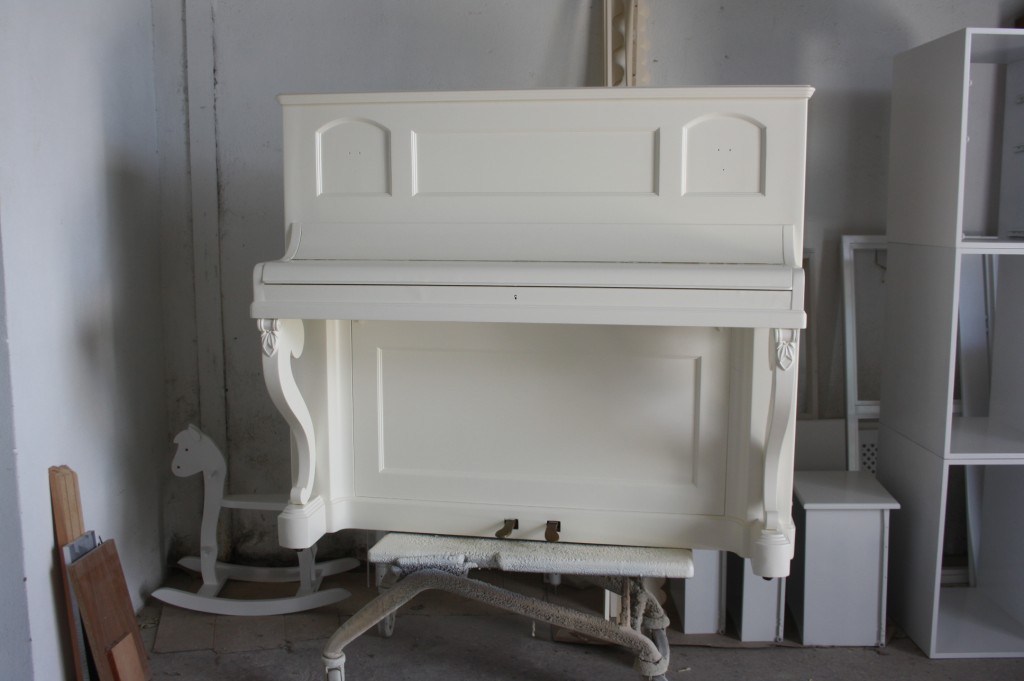Elise´s piano
Today we are going to talk about a job that we finished recently and that has taken us some time, but we love it give a new look to this upright piano. The job was to repair parts of the furniture and give it a lacquer finish, to the taste of the customer.
The piano before restorationThe piano is 19th century, dated 1862, year in which he was exposed at the ” International Exhibicion London”, judging at least by the Medallion that can be found in the inside of the lid of the piano.
We know, so tells Elise, which carries five generations in his family, from 1918, and she always remembers it white, although originally it was another color and gives us some photos like this piano.
Photo courtesy of the customer, 1918.It is amazing the sentimental value that can have a piece of furniture for us, but for other people pass unnoticed. Not to mention the historical value that hides a piece like this, which also acts as a historical witness of many events. These are the jobs that every morning makes you face the workday with desire and enthusiasm, on especially when customer gives us so much documentation, because like we rate its antiquity and our good do.
The piano was manufactured in the Netherlands by the brothers Brødrene Hals, pioneers in the art. And two centuries later it arrives at the Taller de Menia, in an advanced state of deterioration.
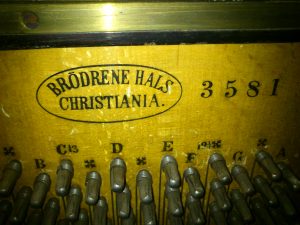 Mark of the manufacturer and serial number
Mark of the manufacturer and serial number
The alterations that we have found in the piano are damages that primarily affect the layers of paint, which in total have found two and stained the wooden original. Above all the most striking are failures, abolsamientos and uprisings of blades. Most of these injuries are identified in the last layer of paint and due to that technique and used paint was not adequate, in addition they applied directly on the lacquered, without sanding previously.
Treatment of repair and conservation that we have carried out has served to make these alterations will not go further and subsequently surface has been prepared to apply the new finish. Must be borne in mind that this work was not a restoration work but a change in appearance of the piano, logically ensuring that the refinishing and repair treatment employed to ensure preservation of the instrument
The treatment that we have carried out is as follows:
1. The first step was to prepare the surface, through the last coat of paint after sanding and cleaning.
2. The next step was to glue and return to its place raised blades: by adhering them again and by pressure with the help of cats and sergeants.
3. Then go to caulk those areas of failure with a resin epoxy. We already have the furniture ready to move to the phase of primer and lacquer, what we call the final finish.
The piano after sanding, gluing and caulk.
4. Also perform keyboard cleaning: the keys were ivory and ebony, very delicate but showed lot of surface dirt, formed by wax, drops of paint and dust in general.
5. The next step was to conduct a treatment of cleaning and protection of the metal fittings of the piano, the front chandeliers and grip, bronze handles.
The chandeliers before of treatment The chandeliers after restoration6. Then we apply to the furniture a primer gun. As we all know this base is a thin, smooth layer that serves to regulate the entire surface and provides a fine finish, which will help hold the coat of lacquer.
7. Finally lacamos the furniture with the color chosen by the customer, white broken and finish matte, with gun, as in the previous step, getting this result.
The piano after the restorationIt has been a long but at the same time spectacular work because the piano had a considerable size and was not easy mobility, but the result has been very good.
Thanks Elise for trusting us.

